 Search by Keyword
Sign Up Below for our MONTHLY BEATLES TRIVIA QUIZ!
|
“SGT. PEPPER’S LONELY HEARTS CLUB BAND (REPRISE)”
(John Lennon – Paul McCartney)
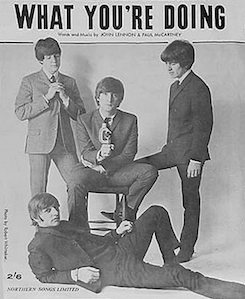 Up to this point, The Beatles would periodically re-record a previously recorded song for various reasons, most times because they thought their first version could be improved upon. Some examples are “What You’re Doing,” “Hold Me Tight” and “What Goes On,” although earlier attempts at these songs have never officially been released. Others, including “I’m Looking Through You,” “Tomorrow Never Knows,” “Norwegian Wood” and "And I Love Her," have eventually been released. Up to this point, The Beatles would periodically re-record a previously recorded song for various reasons, most times because they thought their first version could be improved upon. Some examples are “What You’re Doing,” “Hold Me Tight” and “What Goes On,” although earlier attempts at these songs have never officially been released. Others, including “I’m Looking Through You,” “Tomorrow Never Knows,” “Norwegian Wood” and "And I Love Her," have eventually been released.
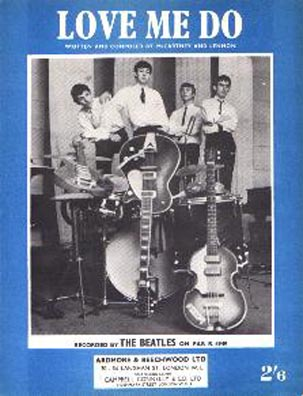 A rarer occurrence for the band was when an early recording attempt and a later attempt were both released and initially available at the same time. This happened as early as “Love Me Do,” the song being available on the original single with Ringo on drums and the album with session drummer Andy White on drums. A similar claim can also be made for the song “Help!,” the mono single version and the stereo album version differing quite dramatically. Then there is the even rarer occurrence when both an early and later attempt at recording a song were combined for its official release, such as with “Strawberry Fields Forever.” A rarer occurrence for the band was when an early recording attempt and a later attempt were both released and initially available at the same time. This happened as early as “Love Me Do,” the song being available on the original single with Ringo on drums and the album with session drummer Andy White on drums. A similar claim can also be made for the song “Help!,” the mono single version and the stereo album version differing quite dramatically. Then there is the even rarer occurrence when both an early and later attempt at recording a song were combined for its official release, such as with “Strawberry Fields Forever.”
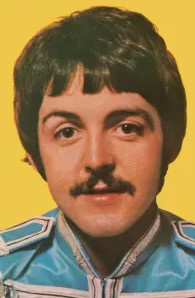 However, in the case of “Sgt. Pepper’s Lonely Hearts Club Band (Reprise),” this was the one and only time that a Beatles song was reworked and recorded purposely to work as a compliment to the first with the intention of both being released at the same time. And although this appears to have been an afterthought, the results were staggeringly successful. However, in the case of “Sgt. Pepper’s Lonely Hearts Club Band (Reprise),” this was the one and only time that a Beatles song was reworked and recorded purposely to work as a compliment to the first with the intention of both being released at the same time. And although this appears to have been an afterthought, the results were staggeringly successful.
Songwriting History
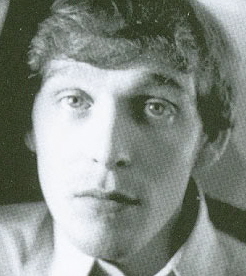 Another unique fact regarding this song is that it would not have existed at all if it had not have been for the group's road manager and assistant Neil Aspinall. “I used to share a flat in Sloane Street with Mal (Evans),” Neil Aspinall writes in the book “The Beatles Anthology” “One day in February Paul called, saying that he was writing a song and asking if he and Mal (Evans) could come over.” The song Neil Aspinall was referring to was “Sgt. Pepper’s Lonely Hearts Club Band,” the theme song that begins the album, which Paul and Mal Evans began to write together on that day. Another unique fact regarding this song is that it would not have existed at all if it had not have been for the group's road manager and assistant Neil Aspinall. “I used to share a flat in Sloane Street with Mal (Evans),” Neil Aspinall writes in the book “The Beatles Anthology” “One day in February Paul called, saying that he was writing a song and asking if he and Mal (Evans) could come over.” The song Neil Aspinall was referring to was “Sgt. Pepper’s Lonely Hearts Club Band,” the theme song that begins the album, which Paul and Mal Evans began to write together on that day.
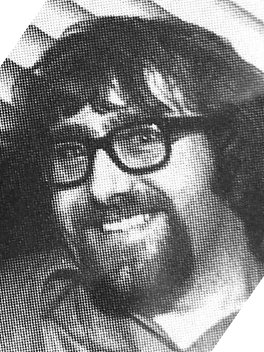 Neil Aspinall adds: “At my place he carried on writing and the song developed. At the end of every Beatles show, Paul used to say, ‘It’s time to go. We’re going to go to bed, and this is our last number.’ Then they’d play the last number and leave. Just then Mal (Evans) went to the bathroom, and I said to Paul, ‘Why don’t you have Sgt. Pepper as the compere of the album? He comes on at the beginning of the show and introduces the band, and at the end he closes it.” Neil Aspinall adds: “At my place he carried on writing and the song developed. At the end of every Beatles show, Paul used to say, ‘It’s time to go. We’re going to go to bed, and this is our last number.’ Then they’d play the last number and leave. Just then Mal (Evans) went to the bathroom, and I said to Paul, ‘Why don’t you have Sgt. Pepper as the compere of the album? He comes on at the beginning of the show and introduces the band, and at the end he closes it.”
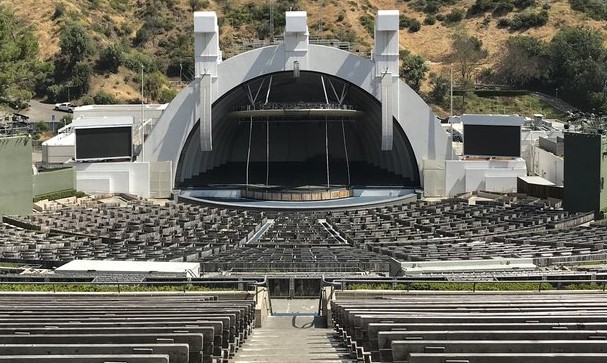 Paul evidently liked the idea and took to composing the song based on the chorus of the original theme song that he and Mal Evans had written. With Neil Aspinall’s suggestion in mind, Paul's closing comments from earlier Beatles shows were incorporated into this song, such as his address to their August 23rd, 1964 Hollywood Bowl show: “This next song will have to be our last one for this evening…sorry…We’d like to thank everybody here tonight for coming along, thank you very much, and we all hope that you’ve enjoyed the show. Have you enjoyed the show? Good, great.” Paul evidently liked the idea and took to composing the song based on the chorus of the original theme song that he and Mal Evans had written. With Neil Aspinall’s suggestion in mind, Paul's closing comments from earlier Beatles shows were incorporated into this song, such as his address to their August 23rd, 1964 Hollywood Bowl show: “This next song will have to be our last one for this evening…sorry…We’d like to thank everybody here tonight for coming along, thank you very much, and we all hope that you’ve enjoyed the show. Have you enjoyed the show? Good, great.”
“A bit later,” Neil Aspinall remembered, “Paul told John about it in the studio. John came up to me and said, ‘Nobody likes a smart-arse, Neil.’ That was when I knew that John liked it and that it would happen.”
Recording History
After over four months of being virtually locked up inside of EMI's recording studios, The Beatles met up once again in the studio to start and finish their final song for the “Sgt Pepper” LP. This day was April 1st, 1967, the session starting sometime after 7 pm and lasting until 6 am the following morning.
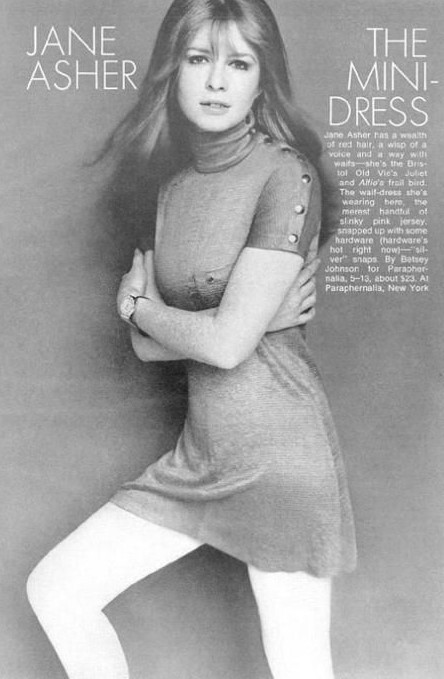 Engineer Geoff Emerick, in his 2007 book “Here, There And Everywhere,” offered his first-hand account of the recording process at this session: “The ‘live audience’ segue between the theme song and ‘With A Little Help From My Friends’ had worked out so well that we now had to come up with something equally spectacular for the end of the album, just before ‘A Day In The Life,’ which would be the obvious closer. And so it was that a full month after the ‘Sgt Pepper’ theme was recorded, the four Beatles returned to the studio in order to reprise their performance, but with several differences. The first was that, with the end of the LP in sight, everyone was energized and in a hurry to get it done quickly. Paul, in fact, was scheduled to fly to the US just two days later – a trip he had no intention of postponing because it would reunite him with his girlfriend Jane Asher after several months apart.” Engineer Geoff Emerick, in his 2007 book “Here, There And Everywhere,” offered his first-hand account of the recording process at this session: “The ‘live audience’ segue between the theme song and ‘With A Little Help From My Friends’ had worked out so well that we now had to come up with something equally spectacular for the end of the album, just before ‘A Day In The Life,’ which would be the obvious closer. And so it was that a full month after the ‘Sgt Pepper’ theme was recorded, the four Beatles returned to the studio in order to reprise their performance, but with several differences. The first was that, with the end of the LP in sight, everyone was energized and in a hurry to get it done quickly. Paul, in fact, was scheduled to fly to the US just two days later – a trip he had no intention of postponing because it would reunite him with his girlfriend Jane Asher after several months apart.”
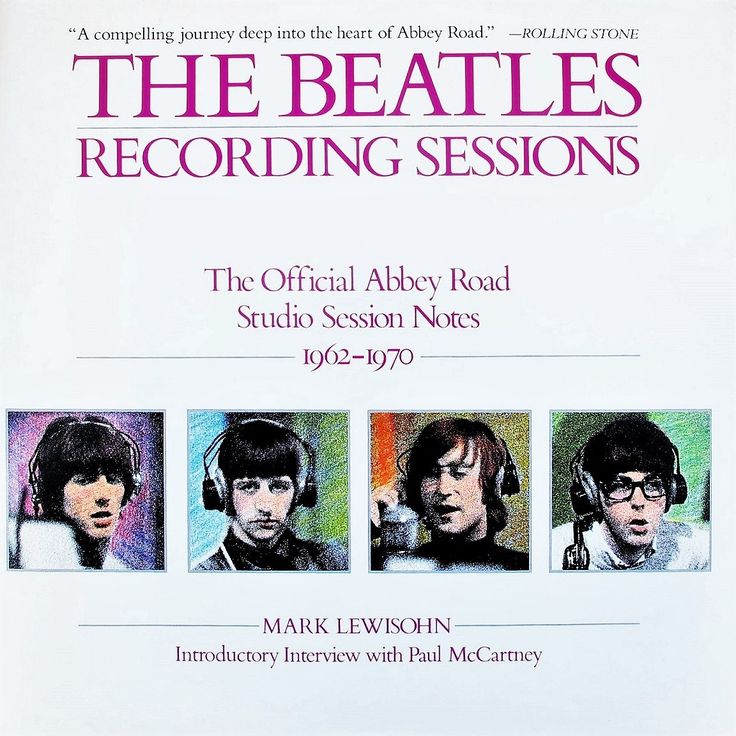 Regarding this trip to America, Mark Lewisohn, in his book “The Beatles Recording Sessions,” states that “Paul had planned to fly out to the USA on 3 April, 1967 – staying until the 12th – and the master tape had been promised to EMI in between.” But it appears that EMI did not get the master tape within this time frame since the stereo mix of “Sgt. Pepper (reprise)” did not get done until April 20th, 1967, not to mention the recording of “Inner Groove” which wasn’t recorded until April 21st, well after Paul returned from America. Also noteworthy about this trip was Paul’s idea for a “Magical Mystery Tour” film which he conceived on the return flight. Regarding this trip to America, Mark Lewisohn, in his book “The Beatles Recording Sessions,” states that “Paul had planned to fly out to the USA on 3 April, 1967 – staying until the 12th – and the master tape had been promised to EMI in between.” But it appears that EMI did not get the master tape within this time frame since the stereo mix of “Sgt. Pepper (reprise)” did not get done until April 20th, 1967, not to mention the recording of “Inner Groove” which wasn’t recorded until April 21st, well after Paul returned from America. Also noteworthy about this trip was Paul’s idea for a “Magical Mystery Tour” film which he conceived on the return flight.
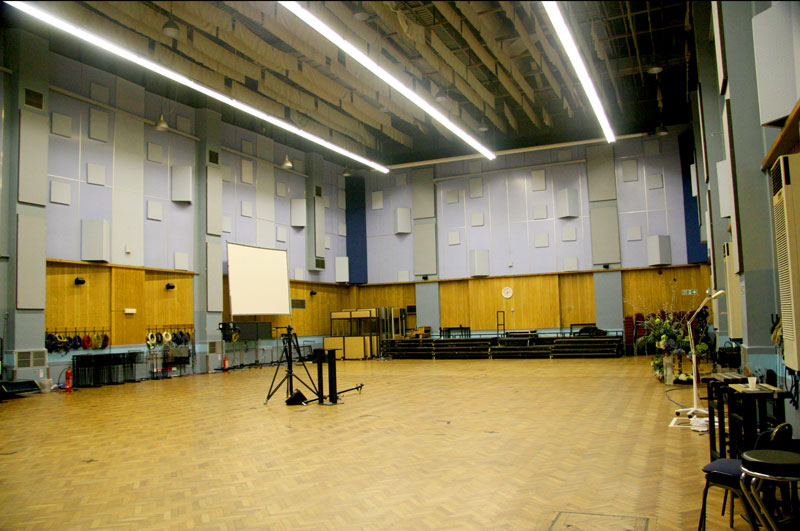 Geoff Emerick added: “The second difference was that, on such short notice, George Martin had been unable to book Studio Two. Other EMI artists had been bumped for The Beatles so often that they all were starting to resent it; whoever had been previously booked in had obviously refused to give up their time. As a result, we were forced to use the cavernous Studio One, which was probably the least conducive place in the Abbey Road complex to recording a high-energy rock song.” Geoff Emerick added: “The second difference was that, on such short notice, George Martin had been unable to book Studio Two. Other EMI artists had been bumped for The Beatles so often that they all were starting to resent it; whoever had been previously booked in had obviously refused to give up their time. As a result, we were forced to use the cavernous Studio One, which was probably the least conducive place in the Abbey Road complex to recording a high-energy rock song.”
 "Finally, we all had to come in on a Saturday," Geoff Emerick recalled. "As long and crazy as the ‘Pepper’ sessions had been over the past four months, The Beatles had stuck rigidly to a weekdays-only schedule, usually working three to four nights a week. We’d all come to count on the weekends as a time to unwind and relax, to get some distance from the intense work we were doing. But there was no choice in the matter, so we all trundled in on April Fool’s Day (April 1st, 1967) for what would turn out to be a momentous session." "Finally, we all had to come in on a Saturday," Geoff Emerick recalled. "As long and crazy as the ‘Pepper’ sessions had been over the past four months, The Beatles had stuck rigidly to a weekdays-only schedule, usually working three to four nights a week. We’d all come to count on the weekends as a time to unwind and relax, to get some distance from the intense work we were doing. But there was no choice in the matter, so we all trundled in on April Fool’s Day (April 1st, 1967) for what would turn out to be a momentous session."
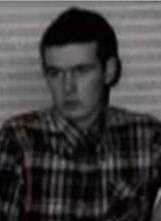 “The acoustics of (EMI) Studio One were far too reverberant for a loud rock band, so I knew that I had to invent some special arrangements in advance. First, I had Richard (Lush) and the maintenance engineer on duty in order gather up all available tall screens and build a kind of hut, thus creating a smaller room within a room. Then I asked Mal (Evans) and Neil (Aspinall) to set up the drums and amplifiers very near one another in order that that there would be minimal delay on the signal that would inevitably spill between the mics, and I arranged The Beatles themselves in a semicircle so they could all see one another.” “The acoustics of (EMI) Studio One were far too reverberant for a loud rock band, so I knew that I had to invent some special arrangements in advance. First, I had Richard (Lush) and the maintenance engineer on duty in order gather up all available tall screens and build a kind of hut, thus creating a smaller room within a room. Then I asked Mal (Evans) and Neil (Aspinall) to set up the drums and amplifiers very near one another in order that that there would be minimal delay on the signal that would inevitably spill between the mics, and I arranged The Beatles themselves in a semicircle so they could all see one another.”
 “It took a lot of effort to tame that room, but it was worth it. The sound that we got that day was tight and ballsy. It did not exactly match the sound of the rest of the album, which was almost entirely recorded in (EMI) Studio Two, but it wasn’t awash in reverb, either, which is what would have happened if I hadn’t screened off one small area for them all to play in. As it is, whatever reverb exists on the ‘Sgt. Pepper’ reprise is actually the sound of the huge room itself – there was no need to add any echo chamber when the tracks were mixed.” “It took a lot of effort to tame that room, but it was worth it. The sound that we got that day was tight and ballsy. It did not exactly match the sound of the rest of the album, which was almost entirely recorded in (EMI) Studio Two, but it wasn’t awash in reverb, either, which is what would have happened if I hadn’t screened off one small area for them all to play in. As it is, whatever reverb exists on the ‘Sgt. Pepper’ reprise is actually the sound of the huge room itself – there was no need to add any echo chamber when the tracks were mixed.”
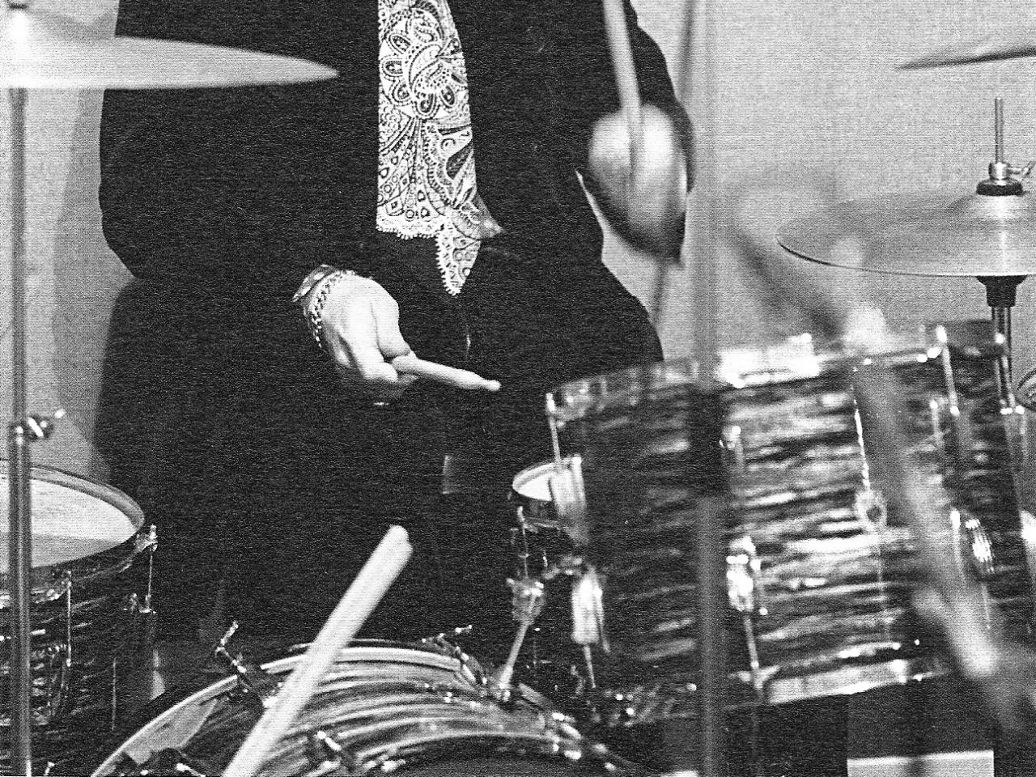 “Everybody was really upbeat that day, and it shows. The vibe was fantastic and the energy was even higher than in the first version. It was a great rhythm track, and I could feel the excitement was building from the very first moment, even in Paul’s count-in, which had a tremendous energy all of its own...Ringo was pounding the hell out of his drums – he was even stomping on the bass drum pedal harder than usual. In fact, everyone was playing full-out. Considering that they had all been cloistered in the studio for so long, pouring their hearts and souls into the album, it really was incredible how good and tight their playing was.” “Everybody was really upbeat that day, and it shows. The vibe was fantastic and the energy was even higher than in the first version. It was a great rhythm track, and I could feel the excitement was building from the very first moment, even in Paul’s count-in, which had a tremendous energy all of its own...Ringo was pounding the hell out of his drums – he was even stomping on the bass drum pedal harder than usual. In fact, everyone was playing full-out. Considering that they had all been cloistered in the studio for so long, pouring their hearts and souls into the album, it really was incredible how good and tight their playing was.”
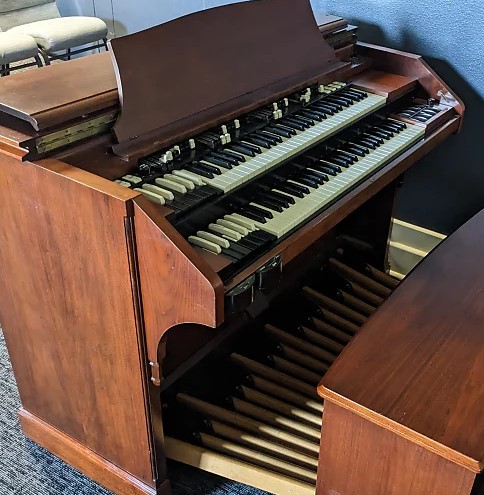 The instrumentation on this recording was McCartney on Hammond organ, John on electric rhythm guitar, Ringo on drums and George playing a surprisingly vibrant lead guitar part live despite his heart being “in India” during this time as he readily admits. No vocals were officially recorded during the rhythm track, only McCartney’s guide vocals. Nine takes of the rhythm track were recorded, "take nine" being deemed best. The instrumentation on this recording was McCartney on Hammond organ, John on electric rhythm guitar, Ringo on drums and George playing a surprisingly vibrant lead guitar part live despite his heart being “in India” during this time as he readily admits. No vocals were officially recorded during the rhythm track, only McCartney’s guide vocals. Nine takes of the rhythm track were recorded, "take nine" being deemed best.
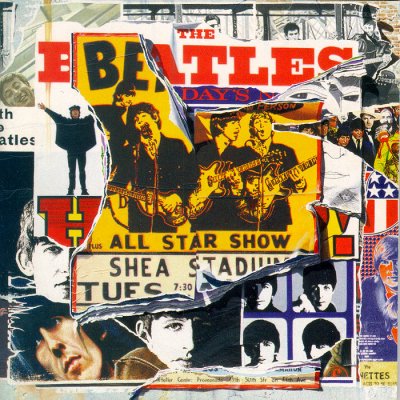 "Take five" of these nine attempts was included on the compilation album "Anthology 2" which shows the band in top form, but with some off-kilter guitar work which unfortunately deemed this take unsatisfactory. "Take eight" is included as a bonus track on 50th Anniversary editions of the "Sgt. Pepper" album which features Paul calling attention to the "98 speakers fixed to the wall of EMI Studio One that were used as part of the 'ambiophony system' that was developed to lengthen the studio's reverberation time when recording classical music," as detailed in the liner notes of the 2017 Anniversary album. Never having seen them before, Paul asked about "all the shapes around the studio, and all those bubbles there, the bumps there." Paul then instructed Ringo to "play the bass drum loud" and when Ringo demonstrated this, Paul exclaimed, "Yeah! Oh, is that what you're doing?" And then, with what appears to be Paul pounding on the top of the Hammond organ, he counts off the song. The performance is nearly perfect but one more attempt is made, and "take nine" ended up being the keeper. "Take five" of these nine attempts was included on the compilation album "Anthology 2" which shows the band in top form, but with some off-kilter guitar work which unfortunately deemed this take unsatisfactory. "Take eight" is included as a bonus track on 50th Anniversary editions of the "Sgt. Pepper" album which features Paul calling attention to the "98 speakers fixed to the wall of EMI Studio One that were used as part of the 'ambiophony system' that was developed to lengthen the studio's reverberation time when recording classical music," as detailed in the liner notes of the 2017 Anniversary album. Never having seen them before, Paul asked about "all the shapes around the studio, and all those bubbles there, the bumps there." Paul then instructed Ringo to "play the bass drum loud" and when Ringo demonstrated this, Paul exclaimed, "Yeah! Oh, is that what you're doing?" And then, with what appears to be Paul pounding on the top of the Hammond organ, he counts off the song. The performance is nearly perfect but one more attempt is made, and "take nine" ended up being the keeper.
 Onto "take nine" was overdubbed "all four Beatles chanting out the quick-paced vocals," as the 1988 "Beatles Recording Sessions" book stipulates (apparently Ringo included). Paul's Rickenbacker bass was also overdubbed as well as Ringo playing tambourine and maracas. Interestingly, a bass guitar can be detected from the rhythm track of "take five" as contained on "Anthology 2" which seems to indicate one of two things: Paul may have overdubbed a bass onto this take as well as "take nine" thinking this one would be used for the final product or, this mix contained on "Anthology 2" had a bass part "flown in" from the finished take in order for "take five" to sound more complete to the listener (which George Martin had done to various other tracks when putting together the Anthology series). Since Giles Martin presented his bonus tracks for the 50th Anniversary Edition of "Sgt. Pepper" unadulterated throughout, it appears that Paul was indeed playing Hammond organ during these takes as presented therein. Onto "take nine" was overdubbed "all four Beatles chanting out the quick-paced vocals," as the 1988 "Beatles Recording Sessions" book stipulates (apparently Ringo included). Paul's Rickenbacker bass was also overdubbed as well as Ringo playing tambourine and maracas. Interestingly, a bass guitar can be detected from the rhythm track of "take five" as contained on "Anthology 2" which seems to indicate one of two things: Paul may have overdubbed a bass onto this take as well as "take nine" thinking this one would be used for the final product or, this mix contained on "Anthology 2" had a bass part "flown in" from the finished take in order for "take five" to sound more complete to the listener (which George Martin had done to various other tracks when putting together the Anthology series). Since Giles Martin presented his bonus tracks for the 50th Anniversary Edition of "Sgt. Pepper" unadulterated throughout, it appears that Paul was indeed playing Hammond organ during these takes as presented therein.
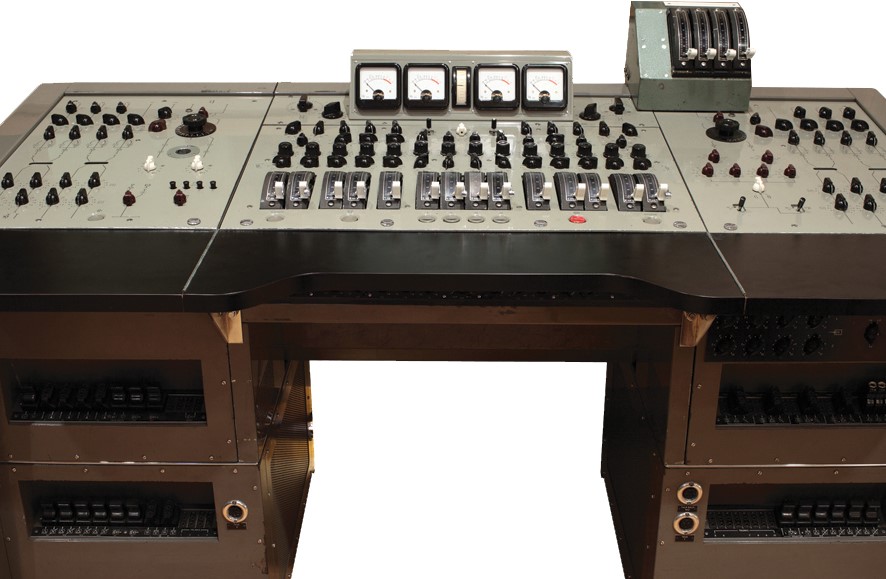 In any event, the "Sgt. Pepper" album is known for its extravagant layering of various sounds, which usually called for repeated use of "bounce downs" in order to open up additional tracks for overdubs, EMI of course still utilizing only four-track machines at this point. Historian and author Mark Lewisohn pointed out, however, that this was "the only song on the album not to be 'bumper'/reduced on the four-track machine. It was a straightforward rock recording; there was no time for niceties and frills." In any event, the "Sgt. Pepper" album is known for its extravagant layering of various sounds, which usually called for repeated use of "bounce downs" in order to open up additional tracks for overdubs, EMI of course still utilizing only four-track machines at this point. Historian and author Mark Lewisohn pointed out, however, that this was "the only song on the album not to be 'bumper'/reduced on the four-track machine. It was a straightforward rock recording; there was no time for niceties and frills."
 “There were all sorts of nice little touches on that song,” Geoff Emerick continues. “The more you listen to it, the more you hear. I always enjoyed John Lennon’s playful ‘good-bye-ee,’ ad-libbed right at the beginning, and, in the last chorus, where it sounds like Paul is off mic, that’s just leakage from his guide vocal track onto the drum overhead mic. It was just something I could never get rid of, so we ended up not worrying about it, kind of like Mal’s (Evans) count during the twenty-four-bar buildup in ‘A Day In The Life.’” The vocal "leakage" he mentioned above, which is heard during the final “hearts…club…band” section of the song, appears quite prominently on the mono mix, but they apparently did find a way to mask most of it on the stereo mix. “There were all sorts of nice little touches on that song,” Geoff Emerick continues. “The more you listen to it, the more you hear. I always enjoyed John Lennon’s playful ‘good-bye-ee,’ ad-libbed right at the beginning, and, in the last chorus, where it sounds like Paul is off mic, that’s just leakage from his guide vocal track onto the drum overhead mic. It was just something I could never get rid of, so we ended up not worrying about it, kind of like Mal’s (Evans) count during the twenty-four-bar buildup in ‘A Day In The Life.’” The vocal "leakage" he mentioned above, which is heard during the final “hearts…club…band” section of the song, appears quite prominently on the mono mix, but they apparently did find a way to mask most of it on the stereo mix.
 Geoff Emerick concludes, “With time pressure on, the entire song was completed, overdubs, mix, and all, in a single long session. The album release date was drawing near and in between takes, the band were going through contact sheets for the LP cover and reviewing design ideas for the gateway sleeve and giveaways they were planning on including.” It took nine attempts by George Martin, Geoff Emerick and Richard Lush to create the mono mix at the end of this session while also overdubbing audience sounds and cheering throughout the song. The ninth mix was deemed best and was used on the album. Note that audience cheering enters abruptly as if they turned on the tape machine instead of fading it in to sound more realistic. Also, just prior to the guitars kicking in at the start of the song, we can hear a burst of laughter from the audience as we did midway through the original “Sgt. Pepper’s Lonely Hearts Club Band” theme. A good amount of ADT (“artificial double tracking”) was also applied to this mono mix. Geoff Emerick concludes, “With time pressure on, the entire song was completed, overdubs, mix, and all, in a single long session. The album release date was drawing near and in between takes, the band were going through contact sheets for the LP cover and reviewing design ideas for the gateway sleeve and giveaways they were planning on including.” It took nine attempts by George Martin, Geoff Emerick and Richard Lush to create the mono mix at the end of this session while also overdubbing audience sounds and cheering throughout the song. The ninth mix was deemed best and was used on the album. Note that audience cheering enters abruptly as if they turned on the tape machine instead of fading it in to sound more realistic. Also, just prior to the guitars kicking in at the start of the song, we can hear a burst of laughter from the audience as we did midway through the original “Sgt. Pepper’s Lonely Hearts Club Band” theme. A good amount of ADT (“artificial double tracking”) was also applied to this mono mix.
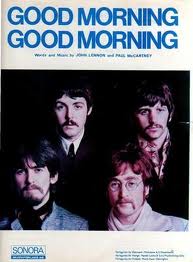 The stereo mix of the song, the last stereo mix made for the album, was made on April 20th, 1967 in the control room of EMI Studio Three by the same team of George Martin, Geoff Emerick and Richard Lush. Ten attempts were made, the last being the one used on the album. The perfect matching of the clucking hen that concluded the song “Good Morning Good Morning” and the opening George Harrison guitar note of “Sgt. Pepper (Reprise)” was no doubt discovered and manipulated at this session. (See the review of “Good Morning Good Morning” for details.) Noticeably different audience effects were superimposed on this mix, only subdued audience noise being heard at the beginning (not cheering as on the mono mix) which is faded in gradually to sound much more realistic. Also, no burst of laughter is heard during the intro of the song this time around. Surprisingly, most everything is centered in this stereo mix, except for Ringo’s maraca and tambourine overdubs which are placed entirely in the left channel. Very little ADT (if any) was used in the making of this stereo mix. The stereo mix of the song, the last stereo mix made for the album, was made on April 20th, 1967 in the control room of EMI Studio Three by the same team of George Martin, Geoff Emerick and Richard Lush. Ten attempts were made, the last being the one used on the album. The perfect matching of the clucking hen that concluded the song “Good Morning Good Morning” and the opening George Harrison guitar note of “Sgt. Pepper (Reprise)” was no doubt discovered and manipulated at this session. (See the review of “Good Morning Good Morning” for details.) Noticeably different audience effects were superimposed on this mix, only subdued audience noise being heard at the beginning (not cheering as on the mono mix) which is faded in gradually to sound much more realistic. Also, no burst of laughter is heard during the intro of the song this time around. Surprisingly, most everything is centered in this stereo mix, except for Ringo’s maraca and tambourine overdubs which are placed entirely in the left channel. Very little ADT (if any) was used in the making of this stereo mix.
Another mono mix was created sometime in late 1995 by George Martin and Geoff Emerick, this being the above mentioned “take five” of the rhythm track, with Paul’s guide vocal still intact, as included on “Anthology 2.”
 Also, sometime between 2004 and 2006, George Martin and his son Giles Martin met up at Abbey Road Studios (formerly EMI Studios) to produce yet another full stereo mix of the song for the soundtrack to the Cirque du Soleil production of “Love.” With the brass of “Hey Jude” still lingering in the air from the previous track on the album, this new “Sgt. Pepper (Reprise)” mix is virtually audience free except for a tiny bit of applause tacked onto the last seconds of the song. They also tried to entirely remove Paul’s vocals from the rhythm track, but a small amount still surfaced. This mix made it onto the resulting “Love” album in 2006 Also, sometime between 2004 and 2006, George Martin and his son Giles Martin met up at Abbey Road Studios (formerly EMI Studios) to produce yet another full stereo mix of the song for the soundtrack to the Cirque du Soleil production of “Love.” With the brass of “Hey Jude” still lingering in the air from the previous track on the album, this new “Sgt. Pepper (Reprise)” mix is virtually audience free except for a tiny bit of applause tacked onto the last seconds of the song. They also tried to entirely remove Paul’s vocals from the rhythm track, but a small amount still surfaced. This mix made it onto the resulting “Love” album in 2006
 Giles Martin, along with engineer Sam Okell, returned to original tapes of the song sometime between 2016 and 2017 in order to create a new stereo mix using the 1967 mono mix as a template. This was done in preparation for the 50th Anniversary editions of the "Sgt. Pepper" LP. Aside from this excellent new mix, they also thought to mix "take eight" for inclusion as a bonus track for some Anniversary editions of this release. Giles Martin, along with engineer Sam Okell, returned to original tapes of the song sometime between 2016 and 2017 in order to create a new stereo mix using the 1967 mono mix as a template. This was done in preparation for the 50th Anniversary editions of the "Sgt. Pepper" LP. Aside from this excellent new mix, they also thought to mix "take eight" for inclusion as a bonus track for some Anniversary editions of this release.
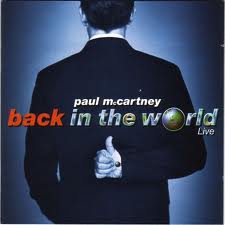 New recordings of the song were also made by Paul during various live performances, the first being part of a medley of the “Pepper” theme song and the “Reprise” as heard on both the double “Tripping The Live Fantastic” set and “Tripping The Live Fantastic: Highlights!” single disc. A new recording of the song, which was paired with the song “The End,” was included on both the albums “Back In The US” and “Back In The World.” A further live recording of the “Pepper/End” medley was included on the album “Good Evening New York City.” New recordings of the song were also made by Paul during various live performances, the first being part of a medley of the “Pepper” theme song and the “Reprise” as heard on both the double “Tripping The Live Fantastic” set and “Tripping The Live Fantastic: Highlights!” single disc. A new recording of the song, which was paired with the song “The End,” was included on both the albums “Back In The US” and “Back In The World.” A further live recording of the “Pepper/End” medley was included on the album “Good Evening New York City.”
Song Structure and Style
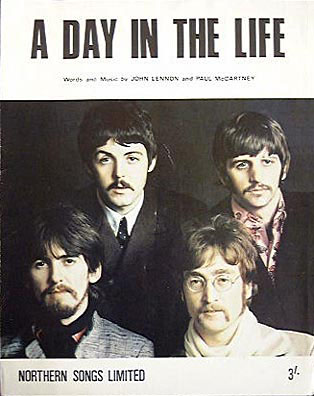 This short but rollicking track does not fit any of the criteria set out in the existing Beatles catalog up to this point, but then again it fills a role like nothing else in their cannon. It was meant to bookend, as it were, the concept of the album that featured different acts on the “Sgt. Pepper” stage show, hence the returning of the audience sound effects. And, as the crowd fades away as it concludes, it sets off the final track, “A Day In The Life,” as a personal artistic achievement from The Beatles themselves and not this fictional “club band.” Nowhere before in pop music had we heard a reprise of a title track on an album, since albums were usually viewed up to this point as collections of songs not good enough to be released as singles. This album was meant to be taken as a whole and listened to in its entirety, a complete listening experience. Without the usual space between each song, the listener even found it quite difficult to place his record needle properly to listen to a particular individual song. This short but rollicking track does not fit any of the criteria set out in the existing Beatles catalog up to this point, but then again it fills a role like nothing else in their cannon. It was meant to bookend, as it were, the concept of the album that featured different acts on the “Sgt. Pepper” stage show, hence the returning of the audience sound effects. And, as the crowd fades away as it concludes, it sets off the final track, “A Day In The Life,” as a personal artistic achievement from The Beatles themselves and not this fictional “club band.” Nowhere before in pop music had we heard a reprise of a title track on an album, since albums were usually viewed up to this point as collections of songs not good enough to be released as singles. This album was meant to be taken as a whole and listened to in its entirety, a complete listening experience. Without the usual space between each song, the listener even found it quite difficult to place his record needle properly to listen to a particular individual song.
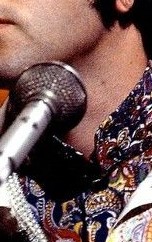 With this in mind, the usual song structure was out the window in favor of simply ending the “Pepper” facade and getting back to reality. The format, then, winds up being just two verses (aa) of different keys (F major to G major) which brought them to the designated key of the already completed “A Day In The Life,” whether intentional or not. Adding in a straightforward count-off from Paul and a simple rocking introduction and you have all the ingredients you need. With this in mind, the usual song structure was out the window in favor of simply ending the “Pepper” facade and getting back to reality. The format, then, winds up being just two verses (aa) of different keys (F major to G major) which brought them to the designated key of the already completed “A Day In The Life,” whether intentional or not. Adding in a straightforward count-off from Paul and a simple rocking introduction and you have all the ingredients you need.
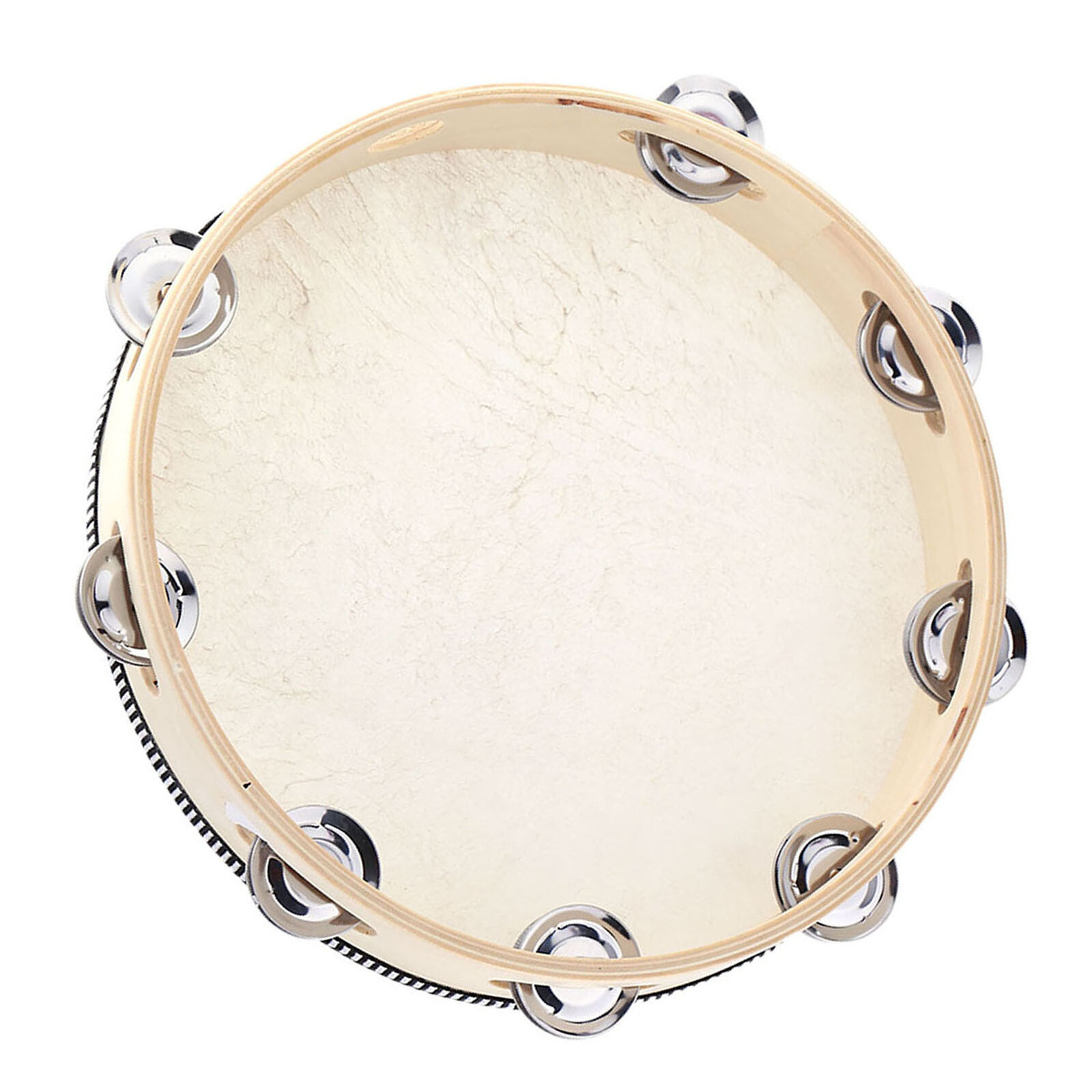 After a quick preliminary guitar note from Harrison, we enter into a ten-measure intro which comprises a slightly audible tapped out first measure, presumably by Paul on Hammond organ, followed by McCartney’s count-off that accounts for the second measure of this intro. Ringo then fills in the next four measures with a vibrant but standard rock beat as well as overdubbed tambourine and maracas. After a short bass glissando, another four measures follow with guitars, bass and organ kicking in. After a quick preliminary guitar note from Harrison, we enter into a ten-measure intro which comprises a slightly audible tapped out first measure, presumably by Paul on Hammond organ, followed by McCartney’s count-off that accounts for the second measure of this intro. Ringo then fills in the next four measures with a vibrant but standard rock beat as well as overdubbed tambourine and maracas. After a short bass glissando, another four measures follow with guitars, bass and organ kicking in.
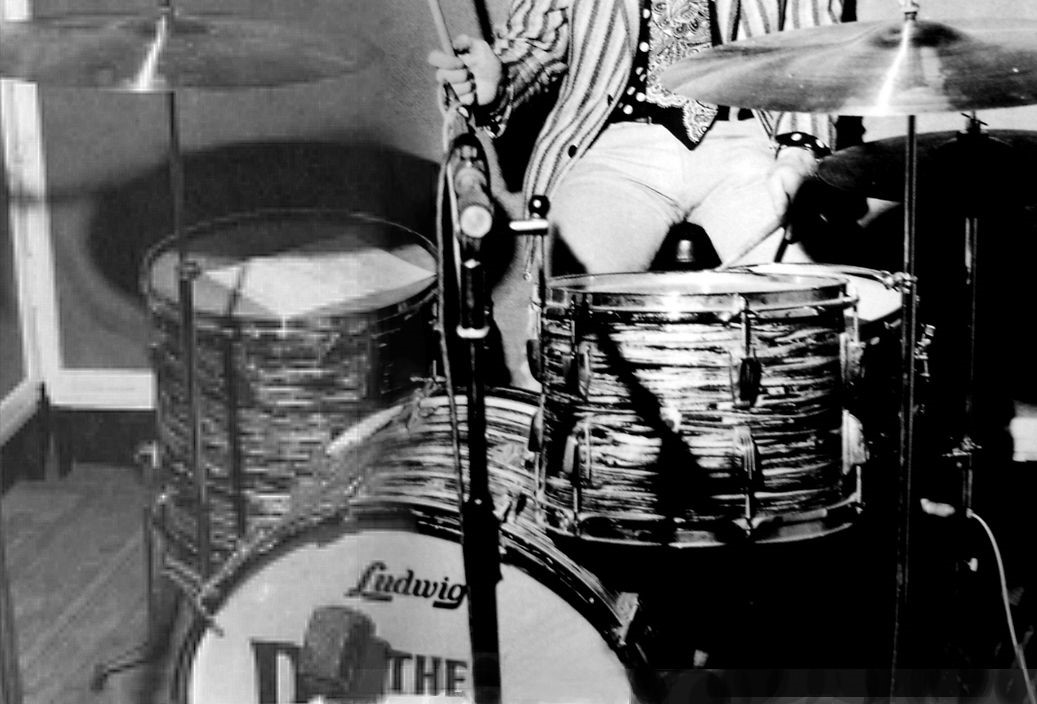 Just after an audible “woah” by Paul from the guide vocal is heard in the final measure of the introduction, the first verse comes in which is twelve measures in length. The added element here is their harmonized vocals which begin immediately in the first measure. After they all sing “we hope you have enjoyed the show,” the audience expresses approval by their starting to cheer in the fourth measure while Harrison adds an accented guitar fill and Ringo slightly alters his drum pattern. The eighth measure has George bring in a higher register guitar run while Ringo puts in a drum fill. The same thing also happens in the twelfth measure as the chords segue into a higher key for the upcoming second verse. Just after an audible “woah” by Paul from the guide vocal is heard in the final measure of the introduction, the first verse comes in which is twelve measures in length. The added element here is their harmonized vocals which begin immediately in the first measure. After they all sing “we hope you have enjoyed the show,” the audience expresses approval by their starting to cheer in the fourth measure while Harrison adds an accented guitar fill and Ringo slightly alters his drum pattern. The eighth measure has George bring in a higher register guitar run while Ringo puts in a drum fill. The same thing also happens in the twelfth measure as the chords segue into a higher key for the upcoming second verse.
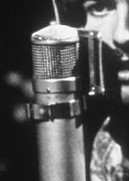 This next verse is actually seventeen measures long due to it also including the song's dramatic conclusion. The same instrumentation continues in this higher key while George continues to fill the vocal gaps with guitar runs in the fourth and eighth measures, Ringo adding another drum fill in the eighth measure as well. An interesting alteration in the melody line occurs in the fifth and sixth measures with the words “one and only lonely hearts club band” to take away a little of the monotony of the lyrics. The finality of the song becomes evident in the twelfth measure when the vocalists stretch out the words “hearts…club…band” with bleed through of Paul’s indecipherable yelling from the rhythm track in the background. This next verse is actually seventeen measures long due to it also including the song's dramatic conclusion. The same instrumentation continues in this higher key while George continues to fill the vocal gaps with guitar runs in the fourth and eighth measures, Ringo adding another drum fill in the eighth measure as well. An interesting alteration in the melody line occurs in the fifth and sixth measures with the words “one and only lonely hearts club band” to take away a little of the monotony of the lyrics. The finality of the song becomes evident in the twelfth measure when the vocalists stretch out the words “hearts…club…band” with bleed through of Paul’s indecipherable yelling from the rhythm track in the background.
 Measures fourteen through seventeen comprise an interesting chord-changing pattern while Harrison displays some final guitar runs and Ringo performs some final drum fills while the audience applauds in appreciation for the splendid time they have all just had. Paul’s final “wooo” in measure fifteen shows that Sgt Pepper’s band enjoyed the show as much as they had. Measures fourteen through seventeen comprise an interesting chord-changing pattern while Harrison displays some final guitar runs and Ringo performs some final drum fills while the audience applauds in appreciation for the splendid time they have all just had. Paul’s final “wooo” in measure fifteen shows that Sgt Pepper’s band enjoyed the show as much as they had.
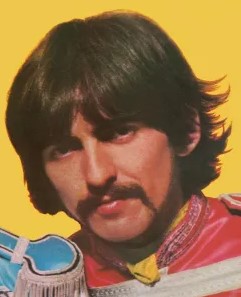 As Geoff Emerick detailed, all four Beatles put in a cohesive and exuberant performance on this recording. All the members of the band were glad and excited that the past four-and-a-half months in the studio were over, being happy to add the celebratory final track to their masterpiece. As Geoff Emerick detailed, all four Beatles put in a cohesive and exuberant performance on this recording. All the members of the band were glad and excited that the past four-and-a-half months in the studio were over, being happy to add the celebratory final track to their masterpiece.
American Releases
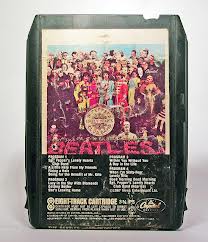 June 2nd, 1967 was the first release date of the song on the American version of “Sgt. Pepper’s Lonely Hearts Club Band.” The vinyl edition of this LP has continued to be reissued in the US throughout the years. As the eight-track tape format became popular, however, an interesting edit of “Sgt. Pepper (Reprise)” needed to be made to fill up the space of the fourth “program.” After the second verse concludes (immediately after Paul’s “wooo”), the previous seven measures are heard again, thus taking us to the end of the song and a quick fade out of the audience cheering. This also becomes the end of the album instead of “A Day In The Life” as The Beatles intended, the former song moved ahead to “program” three. This was done to divide up the music into four equal sections on the tape, but in the process dramatically rearranged the order of the songs. June 2nd, 1967 was the first release date of the song on the American version of “Sgt. Pepper’s Lonely Hearts Club Band.” The vinyl edition of this LP has continued to be reissued in the US throughout the years. As the eight-track tape format became popular, however, an interesting edit of “Sgt. Pepper (Reprise)” needed to be made to fill up the space of the fourth “program.” After the second verse concludes (immediately after Paul’s “wooo”), the previous seven measures are heard again, thus taking us to the end of the song and a quick fade out of the audience cheering. This also becomes the end of the album instead of “A Day In The Life” as The Beatles intended, the former song moved ahead to “program” three. This was done to divide up the music into four equal sections on the tape, but in the process dramatically rearranged the order of the songs.
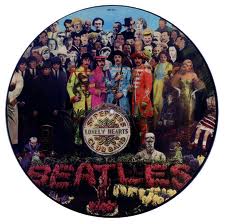 The next release of interest is the picture disc of the “Pepper” album, this being available for a limited time starting sometime during 1978. This picture disc was released again on December 15th, 2017 on 180 Gram vinyl using the new Giles Martin stereo mix. The next release of interest is the picture disc of the “Pepper” album, this being available for a limited time starting sometime during 1978. This picture disc was released again on December 15th, 2017 on 180 Gram vinyl using the new Giles Martin stereo mix.
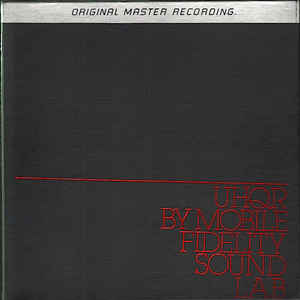 Two interesting American vinyl reissues of the “Sgt. Pepper” album were released as "Original Master Recording" editions produced through Mobile Fidelity Sound Lab. The first of these released in September of 1982 (featuring matrix # UHQR "Ultra High Quality Recording" 1-100) listed for $40 per copy, or more than five times the cost of the standard version, and was limited to 5000 sequentially numbered copies, each weighing 200 grams (double the weight of conventional vinyl at that time). Each disc was packaged between layers of protective foam rubber in a thick box. The second edition from Mobile Fidelity Sound Lab was released in June of 1983 similar to the rest of the Beatles catalog released within their series. Both of these were prepared utilizing half-speed mastering technology from the original master tape on loan from EMI. These versions of “Sgt. Pepper” were only available for a short time and are quite collectible today. Two interesting American vinyl reissues of the “Sgt. Pepper” album were released as "Original Master Recording" editions produced through Mobile Fidelity Sound Lab. The first of these released in September of 1982 (featuring matrix # UHQR "Ultra High Quality Recording" 1-100) listed for $40 per copy, or more than five times the cost of the standard version, and was limited to 5000 sequentially numbered copies, each weighing 200 grams (double the weight of conventional vinyl at that time). Each disc was packaged between layers of protective foam rubber in a thick box. The second edition from Mobile Fidelity Sound Lab was released in June of 1983 similar to the rest of the Beatles catalog released within their series. Both of these were prepared utilizing half-speed mastering technology from the original master tape on loan from EMI. These versions of “Sgt. Pepper” were only available for a short time and are quite collectible today.
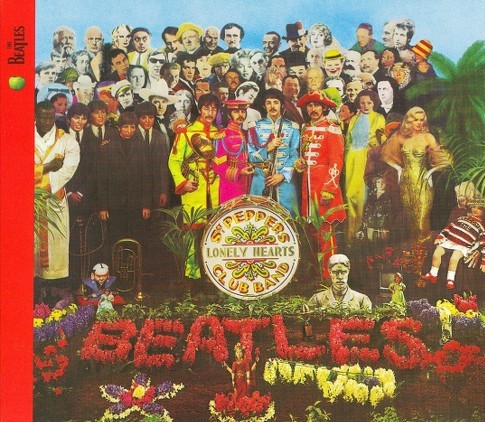 Then came the first compact disc release of the "Sgt. Pepper" album on September 21st, 1987 which was then remastered and re-released on September 9th, 2009. March 18th, 1996 was the release date for the compilation album “Anthology 2” which, as stated above, includes an interesting peek at an early take of the rhythm track ("take 5") with McCartney’s guide vocals and the mysterious Hammond organ part. Then came the first compact disc release of the "Sgt. Pepper" album on September 21st, 1987 which was then remastered and re-released on September 9th, 2009. March 18th, 1996 was the release date for the compilation album “Anthology 2” which, as stated above, includes an interesting peek at an early take of the rhythm track ("take 5") with McCartney’s guide vocals and the mysterious Hammond organ part.
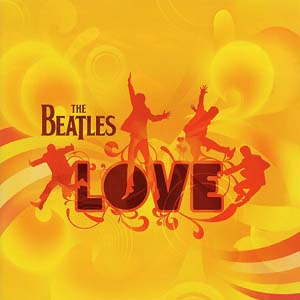 The newly mixed version of the song for the Cirque du Soleil show, as detailed above, came out on November 20th, 2006 on the album entitled “Beatles Love.” This platinum-selling album won two Grammy Awards in 2008, the first award for “Best Compilation Soundtrack Album” and the second award for “Best Surround Sound Album.” The newly mixed version of the song for the Cirque du Soleil show, as detailed above, came out on November 20th, 2006 on the album entitled “Beatles Love.” This platinum-selling album won two Grammy Awards in 2008, the first award for “Best Compilation Soundtrack Album” and the second award for “Best Surround Sound Album.”
 The rare mono mix of the song was made available in the US initially when the album was first released, but Capitol halted mono LP production shortly thereafter because of the growing popularity of the stereo format. It was finally made available again as part of the box set “The Beatles In Mono” released on September 9th, 2009 on CD and on vinyl on September 9th, 2014. Since so much difference is apparent between the stereo and mono mixes of “Sgt. Pepper (Reprise),” this track received much attention when this box set was released. The rare mono mix of the song was made available in the US initially when the album was first released, but Capitol halted mono LP production shortly thereafter because of the growing popularity of the stereo format. It was finally made available again as part of the box set “The Beatles In Mono” released on September 9th, 2009 on CD and on vinyl on September 9th, 2014. Since so much difference is apparent between the stereo and mono mixes of “Sgt. Pepper (Reprise),” this track received much attention when this box set was released.
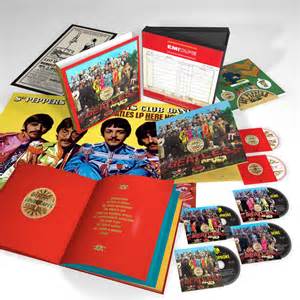 On May 26th, 2017, the 50th Anniversary releases of the "Sgt Pepper" album hit the market in many forms. All editions included the newly mixed "Sgt. Pepper (Reprise)," while the "2 CD Anniversary Edition" and also the "Super Deluxe Edition" box set featured "take eight" as well. On May 26th, 2017, the 50th Anniversary releases of the "Sgt Pepper" album hit the market in many forms. All editions included the newly mixed "Sgt. Pepper (Reprise)," while the "2 CD Anniversary Edition" and also the "Super Deluxe Edition" box set featured "take eight" as well.
The US releases of Paul's live albums that feature the track "Sgt Pepper (Reprise)" are “Tripping The Live Fantastic” (released on November 5th, 1990), “Tripping The Live Fantastic: Highlights!” (released November 12th, 1990), “Back In The US” (released November 11th, 2002) and then “Good Evening New York City” (released November 17th, 2009).
Live Performances
 Although The Beatles never performed the song live, McCartney definitely took advantage of it throughout his live career. In fact, every concert tour he’s embarked on between September 1989 and June 2011 featured “Sgt. Pepper (Reprise),” whether within a medley with the “Sgt. Pepper” theme song or at the conclusion of the show as a medley with “The End.” He then revived the song six years later for the 2017 leg of his "One On One" tour (from April 25th at the Nippon Budokan in Tokyo, Japan to December 16th in Aukland, New Zealand) as well as his extensive "Freshen Up" tour (from September 17th, 2018 in Quebec City, Canada to July 13th, 2019 in Los Angeles, California). Paul continued his use of "Sgt Pepper (reprise)" during the encore of both the 2023 and 2024 legs of his "Got Back" tour, which stretched from October 18th, 2023 (Adalaide, Australia) to December 19th, 2024 (London, England). Although The Beatles never performed the song live, McCartney definitely took advantage of it throughout his live career. In fact, every concert tour he’s embarked on between September 1989 and June 2011 featured “Sgt. Pepper (Reprise),” whether within a medley with the “Sgt. Pepper” theme song or at the conclusion of the show as a medley with “The End.” He then revived the song six years later for the 2017 leg of his "One On One" tour (from April 25th at the Nippon Budokan in Tokyo, Japan to December 16th in Aukland, New Zealand) as well as his extensive "Freshen Up" tour (from September 17th, 2018 in Quebec City, Canada to July 13th, 2019 in Los Angeles, California). Paul continued his use of "Sgt Pepper (reprise)" during the encore of both the 2023 and 2024 legs of his "Got Back" tour, which stretched from October 18th, 2023 (Adalaide, Australia) to December 19th, 2024 (London, England).
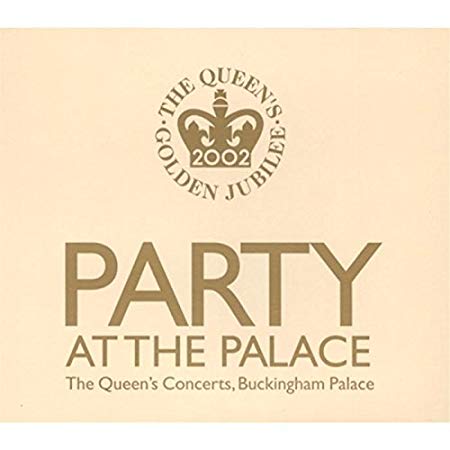 Noteworthy performances of the song include June 3rd, 2002 at the "Party At The Palace" event in London during the "Golden Jubilee of Queen Elizabeth II" with the Queen herself in attendance. Paul chose to combine "Sgt. Pepper (Reprise)" with "The End" on this occassion. Also, on July 13th, 2019, Ringo joined McCartney at Dodger's Stadium in Los Angeles, California during his "Freshen Up" tour to perform this song during his finale. Then, on December 19th, 2024, Ringo was invited to the stage once again at the O2 Stadium in London, Paul asking him: "Should we rock? Get on your kit, lad." They played "Sgt. Pepper (reprise)" together along with the song "Helter Skelter" during the encore of the show. Noteworthy performances of the song include June 3rd, 2002 at the "Party At The Palace" event in London during the "Golden Jubilee of Queen Elizabeth II" with the Queen herself in attendance. Paul chose to combine "Sgt. Pepper (Reprise)" with "The End" on this occassion. Also, on July 13th, 2019, Ringo joined McCartney at Dodger's Stadium in Los Angeles, California during his "Freshen Up" tour to perform this song during his finale. Then, on December 19th, 2024, Ringo was invited to the stage once again at the O2 Stadium in London, Paul asking him: "Should we rock? Get on your kit, lad." They played "Sgt. Pepper (reprise)" together along with the song "Helter Skelter" during the encore of the show.
Conclusion
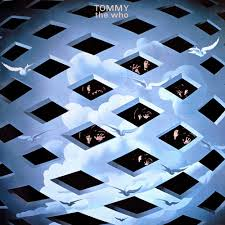 Most reviewers fail to comment much on this track due to them realizing that its only intended purpose was to quickly tie the album together, giving the illusion that the album was a "concept album" of sorts. As an album, “Sgt. Pepper” does NOT fall into the "concept album" or "rock opera" category very well as does "Jesus Christ Superstar," “Tommy,” “Quadrophenia” and others that have graced the musical landscape throughout the years, successfully and otherwise. However, “Sgt Pepper” predates all of these and has played a notable role in paving the way for The Who and many others to feel compelled to take the intended idea to a far greater level. Most reviewers fail to comment much on this track due to them realizing that its only intended purpose was to quickly tie the album together, giving the illusion that the album was a "concept album" of sorts. As an album, “Sgt. Pepper” does NOT fall into the "concept album" or "rock opera" category very well as does "Jesus Christ Superstar," “Tommy,” “Quadrophenia” and others that have graced the musical landscape throughout the years, successfully and otherwise. However, “Sgt Pepper” predates all of these and has played a notable role in paving the way for The Who and many others to feel compelled to take the intended idea to a far greater level.
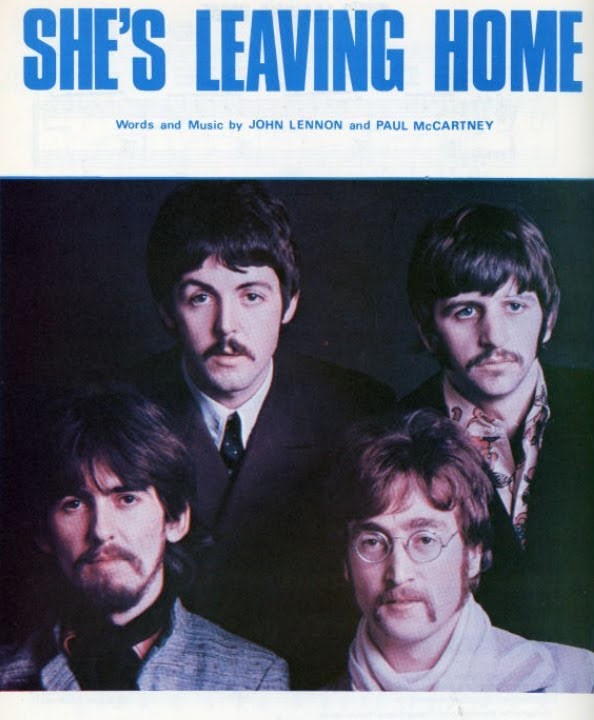 Therefore, we can easily credit the inclusion of “Sgt. Pepper (Reprise)” as the glue that keeps the "concept" illusion real for the listener, reminding us that tracks like “She’s Leaving Home,” “Being For The Benefit Of Mr. Kite!” and “Within You Without You,” as well as many others, were all various acts taking the stage for this extravagant show. And, lest we forget, the exuberant performance they all displayed on this song. Credit where credit is surely due! Therefore, we can easily credit the inclusion of “Sgt. Pepper (Reprise)” as the glue that keeps the "concept" illusion real for the listener, reminding us that tracks like “She’s Leaving Home,” “Being For The Benefit Of Mr. Kite!” and “Within You Without You,” as well as many others, were all various acts taking the stage for this extravagant show. And, lest we forget, the exuberant performance they all displayed on this song. Credit where credit is surely due!
Song Summary
“Sgt. Pepper’s Lonely Hearts Club Band (Reprise)”
Written by: John Lennon / Paul McCartney
-
Song Written: February, 1967
-
Song Recorded: April 1, 1967
-
First US Release Date: June 2, 1967
-
-
US Single Release: n/a
-
Highest Chart Position: n/a
-
-
Length: 1:18
-
Key: F major to G major
-
Producer: George Martin
-
Engineers: Geoff Emerick, Richard Lush
Instrumentation (most likely):
-
Paul McCartney - Harmony Vocals, Organ (Hammond RT-3), Bass Guitar (1964 Rickenbacker 4001 S)
-
John Lennon - Harmony Vocals, Rhythm Guitar (1965 Epiphone Casino ES-230TD)
-
George Harrison - Harmony Vocals, Lead Guitar (1965 Epiphone Casino ES-230TD)
-
Ringo Starr - Harmony Vocals, Drums (1964 Ludwig Super Classic Black Oyster Pearl), tambourine, maracas
Written and compiled by Dave Rybaczewski
|
IF YOU WOULD LIKE TO MAKE A DONATION TO KEEP THIS WEBSITE UP AND RUNNING, PLEASE CLICK BELOW!
|